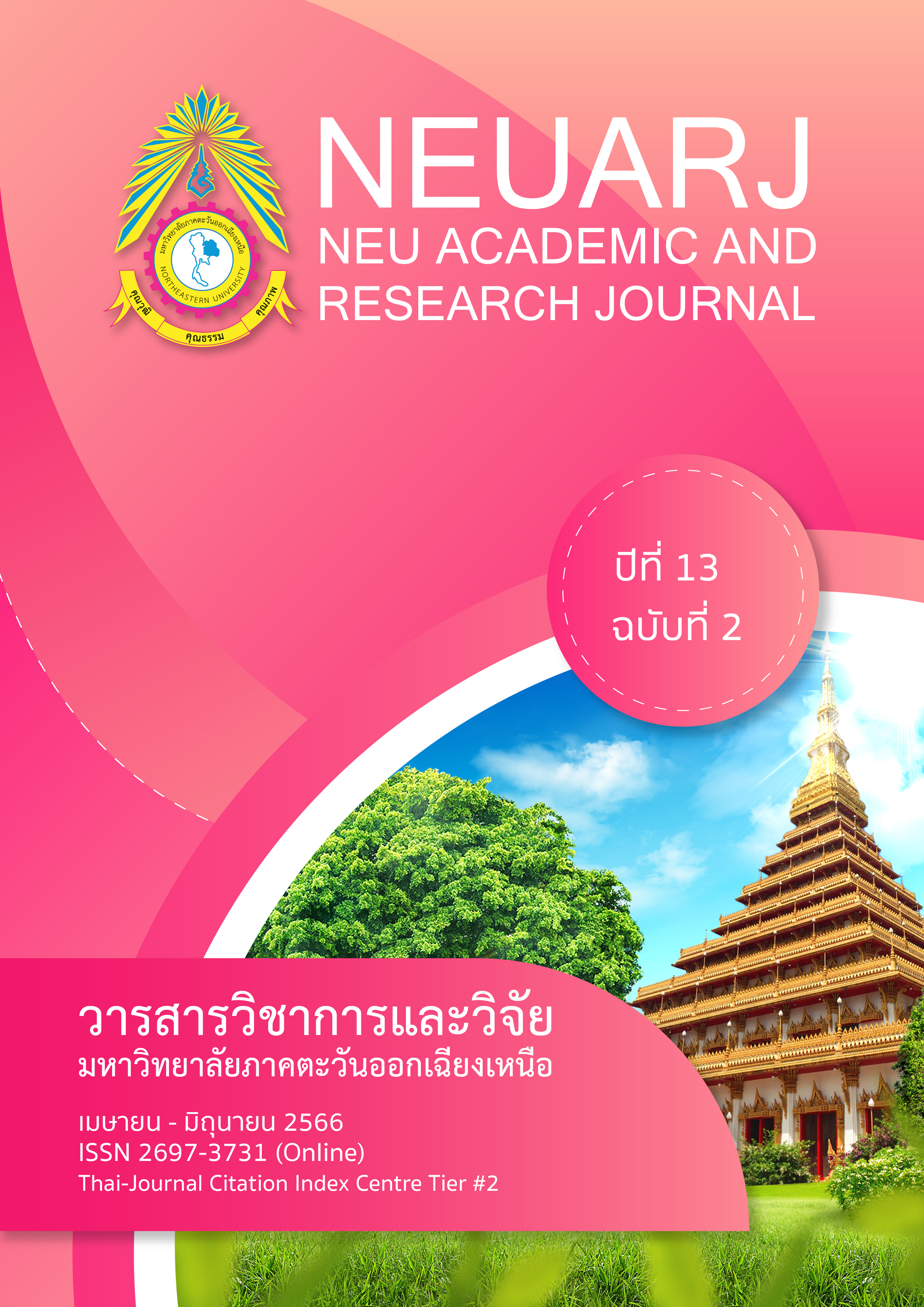Loan Wording vs Cultural Substitution: Study of Thai University Students’ Perception of Translation Techniques Used in Translated Literature ‘The Happiness of Kati’
คำสำคัญ:
Thai-English translation, comprehensibility, loan wording, cultural substitutionบทคัดย่อ
In the past decade, the demand for the English translation of Thai literature has increased due to the effect of globalization. To efficiently translate one language to another, translation techniques are commonly employed by translators (Larson, 1998). However, the prejudice toward a specific variation of English and translation techniques could limit the options to produce truly beautiful and understandable translation works. Therefore, this study aims to investigate students' perception of two types of translation techniques namely loan wording and cultural substitution. The objectives of the study are to answer three research questions: 1) Which version of translated excerpts that the majority of the students found to be more comprehensible?, 2) Between loan wording and cultural substitution, what is the most suitable strategy according to the students’ opinion?, and 3) What are the main reasons for the selection of a specific version? The study compares 10 excerpts (short text) that are English translations of text from the Thai novel 'The Happiness of Kati' in terms of their comprehensibility. The participants consisted of 2 male and 2 female third-year English major students from the faculty of humanities and social sciences, at Khon Kaen University. The instruments used in this study were a questionnaire and a semi-structured interview. The study employed the use of a mixed-method design for gathering and analyzing both qualitative and quantitative data. The result shows that the majority of the students disagreed with the use of the loan wording technique while the cultural substitution technique was usually seen as an appropriate choice regardless of the translator's knowledge, experience, and well-established background. The reasons behind the students’ decisions are mainly the understandability of foreign readers who are not familiar with the Thai language or culture, the preservation of the Thai culture's cultural undertone in the translated text, and the need for sufficient description and appropriateness in an international context.
เอกสารอ้างอิง
Baker, C. (1992). Attitudes and language. Clevedon: Multilingual Matters.
Crystal, D. (2012). English as a global language. Cambridge : Cambridge University Press.
Goodreads. (2009). The happiness of Kati. Retrieved from https://www.goodreads.com/book/show/710657
Jindapitak, N., and Teo, A. (2010). Thai in blood, American in taste: English learners’ preferences for varieties of English. In Proceedings of the 2nd International Conference on Humanities and Social Sciences (pp.1-16). Prince of Songkla UniversityThailand.
Jindapitak, N., and Teo, A. (2012). Thai tertiary English majors’ attitudes towards and awareness of world Englishes. Journal of English Studies, 7, 74-116.
Kachru, B.B. (1992). The Other Tongue: English across Cultures. Illinois: University of Illinois Press.
Kachru, B. B., Kachru, Y., and Nelson, C. L. (2008). The Handbook of World Englishes. New Jersey: John Wiley & Sons.
Kaidchadathon, S. (2014). The Analysis of Translation Techniques used in the Translation of Harry Potter and The Prisoner of Azkaban in the Thai Language. Retrived from
http://library1.nida.ac.th/termpaper6/lang/2014/20093.pdf
Khanjanavisitipol, S. (2018). Translation techniques on name of Thai dishes from Thai to English. Master’s Thesis, Graduate School. Chonburi: Burapha University.
Larson, M. L. (1998). Meaning-based translation: A Guide to Cross-language Equivalence. United States: University Press of America.
Malone, J. L. (2016). The science of linguistics in the art of translation: Some tools from linguistics for the analysis and practice of translation. New York: State University of New York Press.
Michaels, W. (2020). Teachers Notes (Middle Years) by Dr. Wendy Michaels. Retrieved from http://www.goodreads.com/docement/download.
Natiladdanon, K., and Thanavisuth, C. (2014). Attitudes, Awareness, and Comprehensibility of ASEAN English Accents: A Qualitative Study of University Students in Thailand. Retrieved from https://so01.tci-thaijo.org/index.php/hbds/article/view/173455
Newmark, P. (1988). A textbook of translation. United States: Prentice Hall International.
Nida, E. (1974). Language structure and translation. California: Stanford University Press.
Patchomchaiwat, L. (2019). Thai Students’ Perspective on Native and Non-Native Teachers’ Pronunciations and Accents. Retrieved from https://so01.tci-thaijo.org/index.php/jsi/article/view/216299
Prompan, J. (2012). A comparison of two thai translated version of the novel: the little princess. (Master’s Thesis Graduate School, Srinakharinwirot University).
SE-ED Book Center. (2006). Annual. Retrieved from https://corporate.se-ed.com/th
Smith, R. (2005). Global English: Gift or curse?. English Today, 21(2), 56-62. https://doi.org/10.1017/s0266078405002075
Trakulkasemsuk, W. (2012). Varieties of English Around the World (pp.101-112). Retrieved From https://doi.org/10.1075/veaw.g42.10tra
SE-ED Book Center. (2006). Annual. Retrieved from https://corporate.se-ed.com/th

ดาวน์โหลด
เผยแพร่แล้ว
รูปแบบการอ้างอิง
ฉบับ
ประเภทบทความ
สัญญาอนุญาต
ลิขสิทธิ์ (c) 2023 วารสารวิชาการและวิจัย มหาวิทยาลัยภาคตะวันออกเฉียงเหนือ

อนุญาตภายใต้เงื่อนไข Creative Commons Attribution-NonCommercial-NoDerivatives 4.0 International License.


